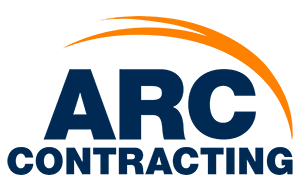3 Steps to Recover Your Home After Storm Damage
Weather happens, the weatherman can give us predictions and warnings as to when storms might happen and where, but they can’t predict what damage will happen to your home. Since we can’t see the future, homeowners purchase insurance to protect themselves from unexpected costs associated with repairing storm damage. Review these 3 steps to be prepared to repair your home quickly in the event of a damaging storm.
Step 1: Visual Safety Assessment
Walk around your home and try to assess the damage after the storm has passed. The damage from the storm might have left some parts of your house unsafe; it is important to look for potentially hazardous areas to avoid injuries to yourself and your family. CAUTION: be aware that there might be debris that could harm you, so use caution when assessing your home.
Assessment Tips:

- Smell your home for gas; if you do smell gas, shut off the main gas line and make a note of a possible leak.
- If you notice any broken glass, discard immediately if you have gloves to protect your hands from getting cut on the sharp broken glass. If windows have been broken, tape any remaining sharp edges with thick tape, like duct tape, to prevent injuries.
- Look for any exposed wires that show signs of sparking; they might be charged with electricity still. DO NOT approach the exposed wires to test them for activity. If you suspect they might still be charged with electricity, rope off the area to keep others away from the exposed wiring.
- Do a visual assessment to the best of your ability to check for potentially unsafe structural damage. Signs of structural damage might be parts of the ceiling buckling down, loose framework, or broken flooring. Try and zone off the potentially dangerous area, so others know to avoid that part of the home. DO NOT physically test areas for damage, for example, do not walk up and down steps that appear to be damaged to check for stability. If you see structure damage, avoid physically interacting in that part of the home, professional contractors have the training and experience to do a more detailed examination of the damage.
Step 2: Check Your Home Inventory
- It is important to have an inventory of the valuables you keep at your home before any storm damage happens to help with the settlement process in the case of a damaging storm and to make sure you have the right amount of insurance coverage. The more detailed your inventory is, the better. Be prepared with detailed descriptions of the
 items and the value of each item. If you did keep an inventory of your belongings, check your list and match it with what has been damaged or is missing to help the insurance company complete the settlement process. Some insurance companies provide inventory logs if you request them; there are also home inventory apps you can download from app stores that you can use to make the process quick and easy.
items and the value of each item. If you did keep an inventory of your belongings, check your list and match it with what has been damaged or is missing to help the insurance company complete the settlement process. Some insurance companies provide inventory logs if you request them; there are also home inventory apps you can download from app stores that you can use to make the process quick and easy.
Step 3: Take Pictures of the Damage
Take pictures following the storm of any damage to your home that you notice. Don’t be afraid to take as many pictures as you can. Most restoration companies will have better knowledge of what damage to thoroughly document with photos and descriptions and what to provide insurance companies. You will want to find a restoration or contracting company that provides free estimates. Also, focus on working with a contracting company that has experience working with storm damage home restorations and is experienced working with insurance companies. To help you decide which restoration company to work with, visit the company’s site and look for an IICRC or BBB Accredited Business logos, so you know the company has been reviewed for quality services and ethical business practices.
Storms can happen almost anywhere whether you are prepared or not. Knowing what to do before and after a storm will help you and your family restore any storm damage that has been done to your home. Immediately after the storm has passed, assess your home for potentially dangerous areas to keep your family safe from storm damage related injuries. Take the time to complete or update your home inventory so the insurance company can compensate you to replace the items damaged. Find a reputable contractor company that has experience working with storm damage so they can properly assist you when working with your insurance company. Your home will most likely be one of the largest investments you make, be prepared to protect your investment when weather happens.



